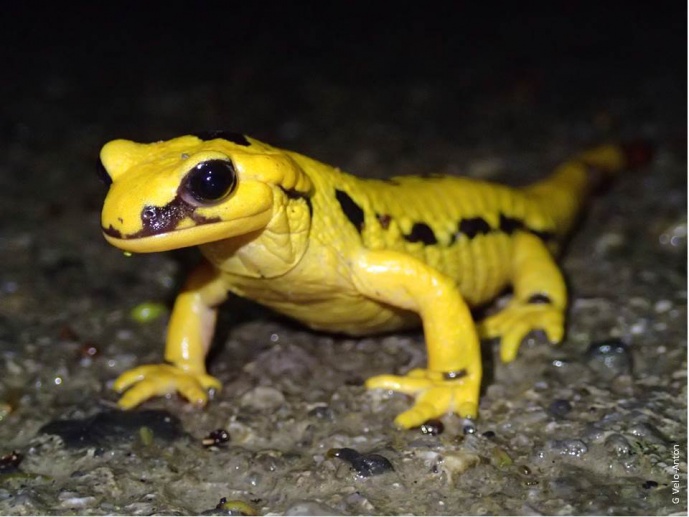Ecological or genetic drivers leading to a reproductive mode transition? The origin of viviparity within the fire salamander (Salamandra salamandra)
Studies regarding the microevolutionary forces underlying phenotypic transitions within species are key stones to better understand macroevolutionary patterns. These transitions might be driven by ecological, developmental, and genetic factors and thus, integrative analyses are needed to understand to what extent each factor may be responsible of a particular microevolutionary change.
Salamandra salamandra is both ecologically and morphologically variable across its wide distribution throughout Europe, but also shows intraspecific variation in reproductive modes. Two distinct modes of reproduction co-occur: the common mode, ovoviviparity (females giving birth to small larvae), and viviparity (females producing only a few large, fully metamorphosed juveniles).
Viviparity has evolved at least twice within this species: 1) an old origin in northern Iberia related to vicariant process during the late Pliocene–early Pleistocene, which resulted in the evolution of viviparity in a restricted area and its spread across northern Iberia populations currently considered as the subspecies S. s. fastuosa and S. s. bernardezi; and 2) a recent origin on two island populations of S. s. gallaica in NW Iberia related to their recent isolation with the rising of sea level after LGM.
Previous studies pointed to ecological pressures as the underlying factor for this reproductive shift; however, the role of genetics and developmental factors cannot be ruled out, and the clear heterochronic modifications between these reproductive strategies suggest a physiologic and/or genetic basis as underlying factors for the micro evolutionary change.
We aim to assess whether there are environmental differences between the distribution of viviparous and ovoviviparous populations across northern Iberian populations, and to unravel the evolutionary scenario for the evolution of insular viviparity by estimating the genetic relationships among island viviparous and coastal ovoviviparous populations.


